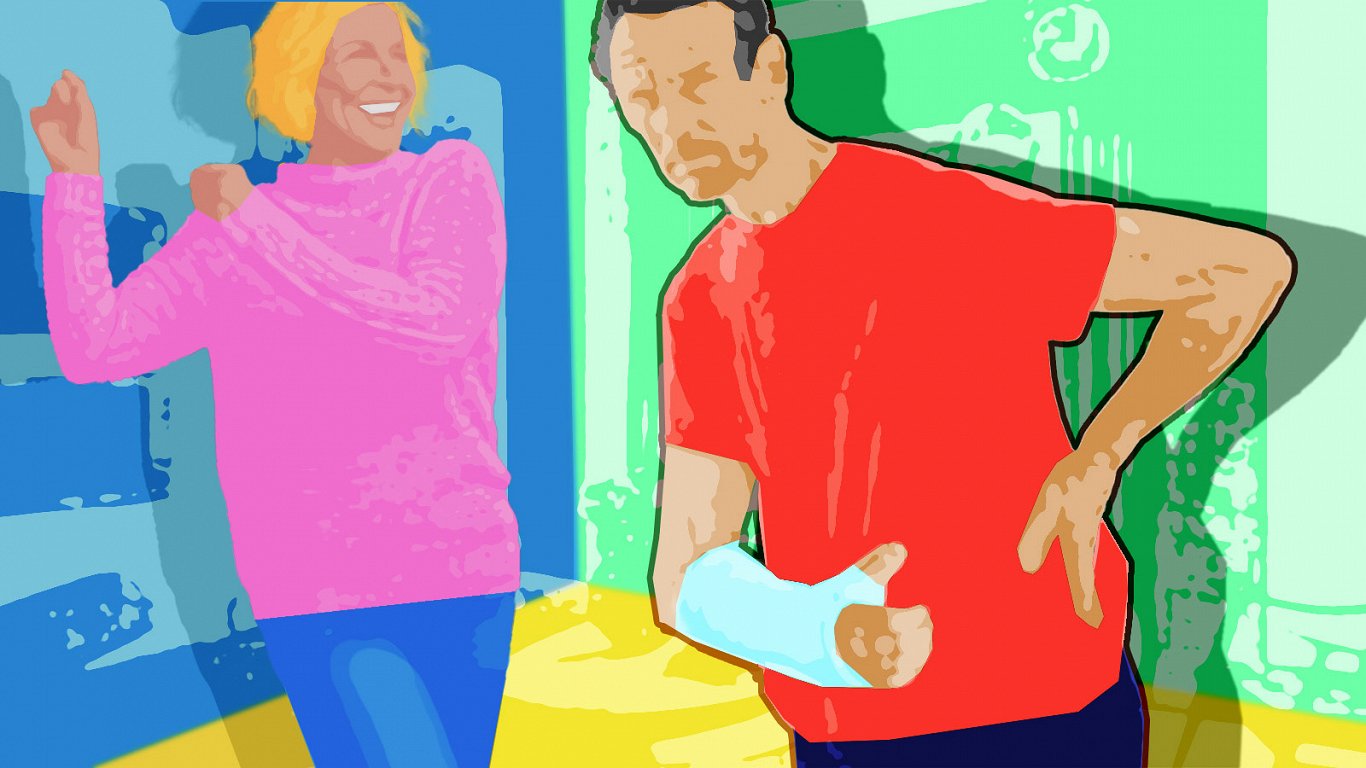Biggest difference in life expectancy between men and women
Life expectancy in the European Union (EU) increased at a relatively consistent pace until 2019, when life expectancy at birth was 81.3 years. The EU has since recorded a reduction in life expectancy in 2020 and 2021, including due to the Covid-19 pandemic.
In 2021, life expectancy in the EU was 80.1 years, while Latvia ranked closer to the bottom of the EU with 73.1 years. However, in 2022 there was an increase – the average life expectancy of the EU was 80.7 years, according to preliminary data from Eurostat. Meanwhile, data compiled by the Central Statistical Bureau (CSB) show that in Latvia in 2022 the average life expectancy at birth was 74.4 years. In both the Eurostat data and the OECD study, Latvia ranks near the bottom.
When comparing the sexes, Latvia has become the leader – we have the EU's largest life expectancy gap between men and women.
In the EU as a whole, life expectancy for women is longer than men - 82.9 and 77.2 years respectively, according to data from the 2021 Eurostat. But the difference in Latvia reaches nearly a decade – women live 78 years on average, while men with 68.2 years have the second shortest life expectancy in the EU ahead only of Bulgarians.
Short healthy life years
Another indicator to look at is healthy life expectancy or healthy life years. In this respect, the picture in Latvia is bleak. Latvia has had the shortest healthy life expectancy in the EU since 2013. The latest European data for 2021 show that Latvians have a healthy life of 53.8 years. Since 2013, Latvian men also have had the shortest healthy life expectancy in the EU – 52.2 years in 2021. Regarding women, Latvia was in the penultimate place in the EU in 2021 with 55.4 years of healthy life.
Judging the life expectancy of Latvian ladies and gentlemen in recent years, it can be concluded that the years of healthy life are gradually increasing for women, but it is harder to see a progression curve for men.
Consequently, Latvia's goal of increasing the number of healthy years of life by four years for men and three years for women by 2027 seems optimistic.
In May 2022, the cabinet approved public health guidelines for 2021-2027, citing this as one of the challenges to be achieved by 2027. Latvia also hopes to reduce the rate of potentially lost years of life by 15% and increase the average life expectancy at birth for men by 1.8 years and for women by 1.2 years.
The public health guidelines acknowledge that Latvia's population health is still much worse than the EU average, despite the fact that the situation is slowly improving year after year.
At the same time, it is noted that there are differences in healthy lifestyle habits in women and men, so the question is – what are the reasons for the poor health of men?
Causes of death
The most common causes of death in both men and women in Latvia are cardiovascular system diseases, as well as tumors and ischemic heart diseases, according to the CSB and the Disease Prevention and Control Center (SPKC) data on causes of death in 2022.
The most common cause of death by far in Latvia is cardiovascular illness. However, women's mortality from these illnesses is higher. In 2022, 902.9 per 100,000 women and 765 men respectively died of cardiovascular disease. SPKC also confirms this, but there is a notable difference between those who die young – in the age group of below 64 years, 1,838 men and 483 women died from these illnesses in 2022.
The second most common cause of death in Latvia are malignant tumors, and the mortality is on average 15% higher than in the EU. Around 6,000 people die of tumors each year, most of them men.
The most common cause of death in the group in women is breast tumors, colorectal and bronchial and lung tumors, and in men bronchial and lung tumors, prostate tumors and colorectal tumors.
According to a cross-sectional study of cardiovascular and other non-communicable disease risk factors of the population of Latvia conducted in 2019, the most common was prostate cancer – 46.2% of male respondents; breast cancer: 32.3% of women; cervical cancer: 26.9% of women; kidney/bladder cancer - 9.4% of respondents.
One of the most commonly recorded tumors is prostate tumor in men, with around 1,000 new cases diagnosed each year.
External causes are the third most common group of causes of death among Latvian residents. External causes of death include transport accidents, drowning, poisoning, suicides, and violence. Mortality from external causes of death in Latvia is gradually decreasing. In this respect, mortality has fallen by 31% since 2010, from 2,108 external cause deaths in 2010 to 1,454 in 2022.
The most common external causes of death are suicides, poisoning, falls, transport accidents, and freezing to death. Men's mortality is higher in this group. Of those who died in 2022 due to external causes, 71% are male. 65% of the deceased population due to external causes is under 64. However, some external causes of death are more common among seniors in the age group 65 +: falls, and smoke and fire effects.
Suicides account for the largest number of external causes of death, so suicides are one of Latvia's most pressing public health problems, both in the population and specifically among adolescents.
Compared to other EU Member States, Latvia has high mortality rates from suicides in both sexes, but especially in adult men over the age of 35 and also in boys under the age group of 15-19. Although the mortality rate from intentional self-harm in Latvia is gradually decreasing, the Baltic States have relatively high mortality rates from suicide compared to other Member States of Eurostat.
Unhealthy habits
Public health guidelines state that unhealthy lifestyle habits are more common in men than in women. Statistics also show this. For example, 43% of men in Latvia smoke daily, while women – 16.2%. Latvia ranks among the five countries with the most smokers in the EU.
Among young people, the popularity of electronic cigarettes is with an upward curve in the age group from 15 to 24. Three years ago, about half of male respondents in this age group responded that they had smoked electronic cigarettes, while last year the proportion had risen to 65%.
LSM has repeatedly emphasized the fact that the high consumption of alcohol in Latvia is worrying. Latvia has the highest absolute consumption of alcohol per capita among the Member States of the OECD.
Six units of alcohol per drink are considered to be hazardous to health (one unit: 40 ml of spirits or 100 ml of wine or 1 bottle (500 ml) of beer). A dangerous amount of alcohol is consumed at least once a month by 11% of Latvian residents, men (19%) much more frequently than women (4%).
Men are also more likely to be diagnosed with alcohol addiction, acute intoxication, alcohol psychosis, and alcohol abuse.
The representative of the World Health Organization in Latvia has stated Latvia loses about 6,000 people each year due to alcohol consumption. Men are more likely to die from direct and indirect alcohol consumption causes.
In addition to unhealthy habits, many in Latvia also tend to choose unhealthy diet and exercise routines, according to Latvia's 2021 health profile. One of the main issues emphasized in the publication is the high level of obesity. In 2019, 22% of Latvia's inhabitants were obese, which was 6% above the EU average at the time. This is directly linked to fruit and vegetable consumption. 65% of Latvian adults consumed less than one serving of fruit per day and 60% less than one serving of vegetables. Women tend to do better in this regard.
Only three out of five adults engage in moderate physical activity every week.
SPKC data show that 59% of men aged 15 to 74 are overweight or obese, but only 24% think they are.
Self-assessment of health is positive
Given the more prevalent unhealthy habits and shorter healthy life expectancy, it is interesting that the SPKC's 2022 study of habits affecting the health of Latvian residents says that men see their health status as better than women.
In particular, in the age group 15 to 74, 61.7% of men see their health status as good or rather good, while women are more critical of their health status, with 50.5% expressing this view.
32.3% of the surveyed population aged 15-74, men (24.5%) less often than women (39.5%) had changed their habits for health reasons.
Although significant differences in health status between men and women have been identified in Latvia, as well as it is stressed that measures are needed that are tailored to different target groups, including the target audience of men, gentlemen seem ready to invest little in their health care. LSM.lv will continue the series of articles with observations from health specialists.



























